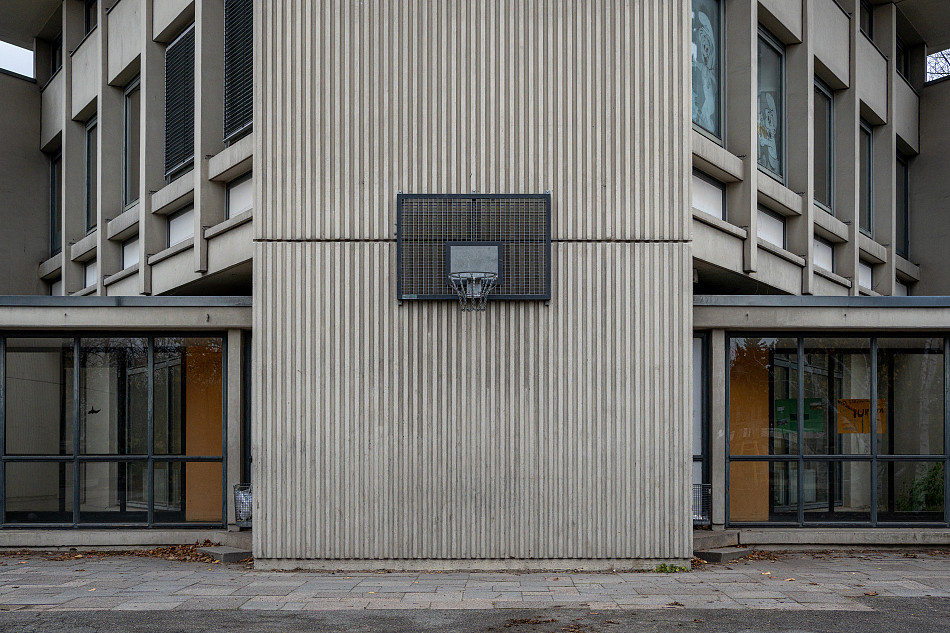
Photo: Martin Zerr
Photo: Martin Zerr
A Social Matter. The Walter Gropius School in Neukölln
Ausstellung im temporary bauhaus-archiv
27 June 2025 – 28 February 2026
What do the places look like where children and adolescents learn and come in contact every day? Students at the University of Applied Sciences Potsdam have completed an artistic research project based on the Walter Gropius School which examines the significance of architecture for education and community, as well as the value of postwar modernist buildings for today’s users.
The Gropiusstadt was designed by Bauhaus founder and architect Walter Gropius in the 1960s as a large-scale residential district in southeast Berlin. At its centre lies the Walter Gropius School, a so-called “pavilion school”. Its design was based on the most innovative educational ideas of the time with cleverly arranged classroom buildings, workshops, open areas and sport facilities. Although listed as a historical landmark, the comprehensive school has fallen into disrepair.
The Gropiusstadt housing development was created to provide modern living space to the masses. And yet Berlin’s lack of affordable housing is far from being solved, and its schools are often in a very poor condition. How is this impacting our society?
The exhibition project was developed in cooperation with the school’s committed principal, Lars Neumann, to draw attention to the urgently needed renovation work that would restore the pedagogically and architecturally significant building. The exhibition presents the students’ findings – the result of two semesters of seminar work, for which they conducted in-person interviews, developed ideas, took photos and produced videos.
Project manager: Wiebke Loeper (professor of photography and dean of the Design Department., University of Applied Sciences Potsdam), Friederike Holländer (head of education, Bauhaus-Archiv Berlin) and Nina Wiedemeyer (curator of the architecture collection, Bauhaus-Archiv Berlin).
